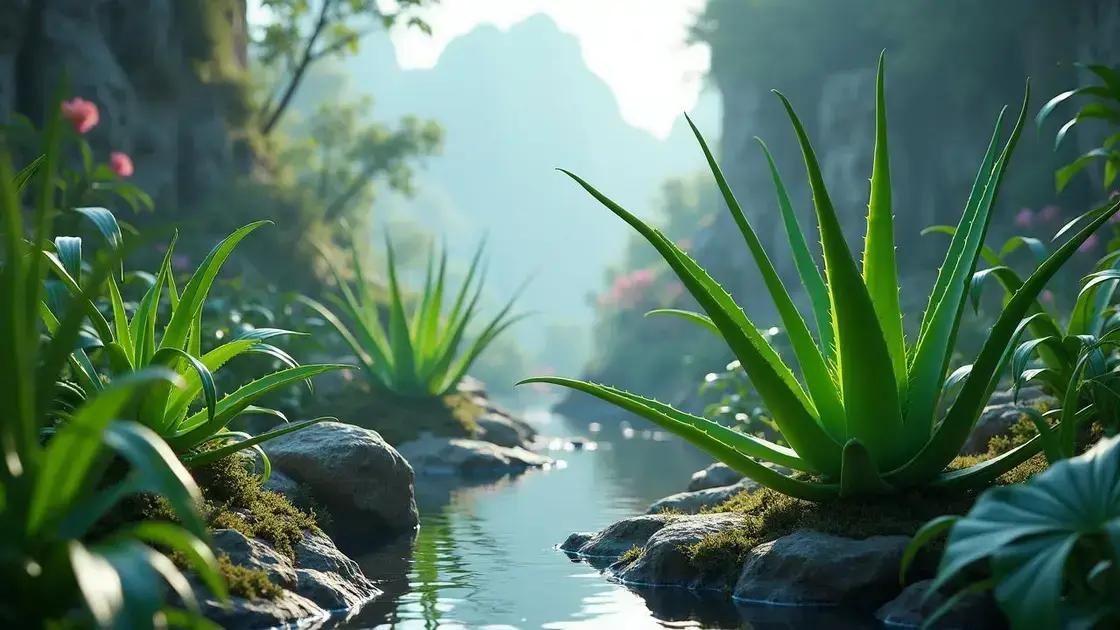How to Take Care Aloe Vera Plant: 7 Simple Tips for Success
How to take care aloe vera plant can feel overwhelming for many new plant enthusiasts. Understanding the basic needs of your aloe vera can simplify the process and enhance its growth. Join us as we explore essential practices that help these resilient plants flourish.
Table of Contents
ToggleEssential watering schedule for aloe vera
How to take care aloe vera begins with understanding its watering needs. Aloe vera plants are succulents that thrive in dry conditions, so establishing a proper watering schedule is crucial to their health. Overwatering is one of the most common problems that can lead to root rot, while underwatering can cause the plant to shrivel. Following these guidelines will ensure your aloe thrives.
Understanding aloe vera’s watering needs
Aloe vera plants require less frequent watering compared to other houseplants. Here are key considerations for setting up an effective watering schedule:
- Water only when the soil is completely dry.
- Check the soil moisture by inserting your finger about an inch deep. If it’s dry, it’s time to water.
- During the growing season (spring and summer), water every 2-3 weeks.
- In the dormant season (fall and winter), reduce watering to once a month.
Signs of overwatering and underwatering
Recognizing the signs of overwatering and underwatering can save your aloe from serious damage:
- Overwatering: Yellow leaves, mushy or blackened stems.
- Underwatering: Wrinkled, shriveled leaves that may become brown and crispy.
Best practices for aloe vera watering
To ensure optimal health, implement these best practices for watering your aloe vera:
- Use a well-draining soil mix designed for succulents.
- Water deeply but infrequently, allowing excess water to drain out completely.
- Consider the temperature and humidity of your environment; hotter, drier conditions may require more frequent watering.
For more tips and practical information, you can visit exploring indoor gardening techniques.
Conclusion
Establishing a solid watering routine is essential when learning how to take care aloe vera. By carefully monitoring soil moisture and understanding the signs of stress in your plant, you can create an environment where your aloe vera not only survives but thrives.
Optimal sunlight exposure for thriving aloe plants

Optimal sunlight exposure for thriving aloe plants is essential for their health and growth. These succulents are naturally adapted to bright environments, making the right light exposure crucial. Inadequate or excessive light can lead to various issues, impacting your aloe’s vibrant green color and overall vitality.
Understanding aloe vera light requirements
Aloe vera plants flourish in bright, indirect sunlight. Here’s how to determine the right exposure:
- Place your plant near a south or west-facing window for maximum exposure.
- Avoid harsh direct sunlight, especially during peak afternoon hours, which can scorch the leaves.
- Monitor your plant’s color; pale or yellow leaves may indicate too much direct sun, while dark green leaves suggest insufficient light.
Best practices for sunlight exposure
Follow these best practices to ensure your aloe receives optimal light:
- Rotate your plant every few weeks to provide even light distribution.
- Use sheer curtains to filter intense sunlight if necessary.
- If indoors, consider using grow lights during darker months to supplement natural light.
For additional insights and tips, explore exploring indoor gardening techniques.
Common issues from improper light exposure
Here are signs of light-related stress in your aloe:
- Sunburn: Brown tips or spots on leaves indicate too much direct sun.
- Legginess: If your aloe becomes stretched and tall, it is seeking more light.
Understanding these signs can help you adjust your plant’s environment for optimal growth.
Best soil and fertilizer requirements for aloe vera
Best soil and fertilizer requirements for aloe vera are critical for ensuring the plant’s health. Aloe vera thrives in well-draining soil, which allows excess water to escape quickly, preventing root rot. Additionally, the right fertilization strategy can boost growth and vitality.
Understanding the ideal soil mix
Aloe vera requires a soil blend that mimics its natural desert habitat. Here’s how to create or select the right soil:
- Choose a cactus or succulent potting mix for optimal drainage.
- If making your own, combine equal parts of potting soil, coarse sand, and perlite.
- Avoid heavy, moisture-retaining soils that can lead to root rot.
Fertilizer guidelines for aloe vera
Feeding your aloe vera properly can enhance its growth. Follow these fertilizer tips:
- Use a balanced, water-soluble fertilizer with a lower nitrogen ratio, such as 10-10-10, diluted to half strength.
- Fertilize every 4-6 weeks during the growing season (spring and summer).
- Skip fertilization in fall and winter when the plant is dormant.
For more information on soil types and plant care, visit exploring indoor gardening techniques.
Signs that your soil or fertilizer strategy needs adjustment
Keep an eye out for these indicators:
- Yellowing leaves: This may suggest over-fertilization or poor soil quality.
- Weak growth: Insufficient nutrients or soil problems can hinder growth; consider reassessing your fertilization schedule.
By understanding the soil and fertilizer needs of your aloe vera, you can help it thrive in your home.
In conclusion
Taking care of aloe vera is a rewarding experience that requires understanding its specific needs related to watering, sunlight exposure, soil, and fertilization. By establishing a consistent watering schedule, ensuring proper light levels, and using the right soil and fertilizer, you can help your aloe vera thrive. Remember to watch for signs of stress and adjust your care routine accordingly. For more resources to enhance your indoor gardening skills, check out tips on enhancing your indoor garden.

